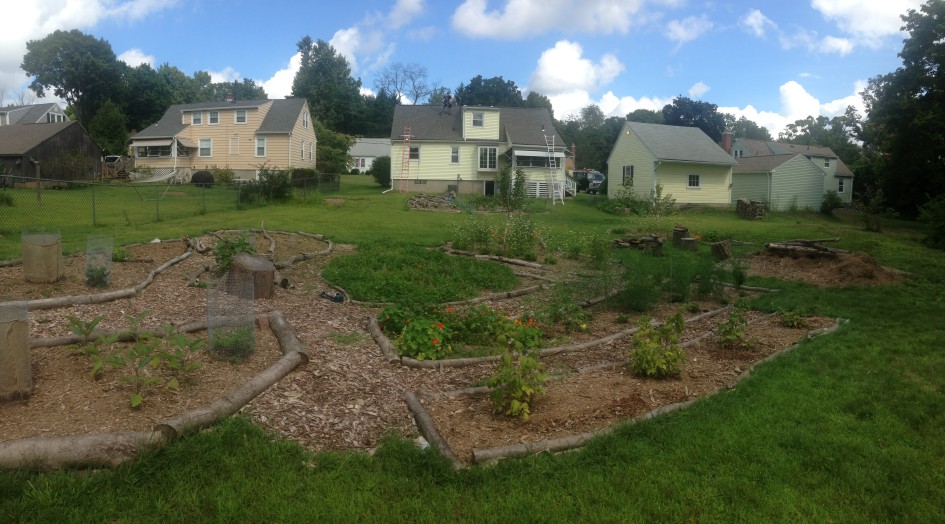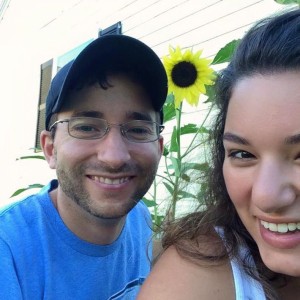So you’ve heard a little bit about permaculture and maybe have seen a few passionate people working on projects or advocating for permaculture, and you’re considering a project of your own. The good news is, the only things you need to start with permaculture is curiosity and commitment. The most exciting aspect of permaculture is the change in mindset with how your interact with the land, and the only way to learn is to give it a try. The environment is not a static state, and how you respond to your local environment should not be static.
Here are my 5 keys to starting a permaculture project.
1. Engagement
The first step to bring a permaculture project to life is to get involved and start learning as much as you can as early as you can. Years before starting a full permaculture project at my own home I toured and volunteered at several permaculture sites. When I was living in Syracuse NY I became interested in seeing what permaculture was all about and found a local food forest and started volunteering. I spent a few night and weekends volunteering at the Rahma Edible Forest Garden. Just by helping out I was able to learn about design, planting, community engagement, and connections. This past summer I volunteered in Holyoke MA at the Paradise Lot and has allowed me to gain so much knowledge about projects years in the making. Jenny will be volunteering at a farm in VT as a part of World Wide Opportunities on Organic Farms (WWOOF), where she will be living on the farm for a period of time.
Make time to form connections, talk to your own friends and family and get engagement and support. One thing is for sure, nobody can sustain a permaculture project over many years of their life by going alone.
2. Observation
Ideally you want to have at least 1 year of observation of your existing property before starting any new project. Observing the flows of water, sunlight, winds, seasons are vital to understand the unique nature of your property. In the suburbs this includes understanding the surrounding homes, and neighbors. A tree on the property next door can severely impact your own growing conditions. If you want to sell vegetables you need to understand the zoning bylaws and land uses you can have. Things like having roosters may not be legal in your area, and getting into long legal battles can get in the way of changing the mindset of your community. Why suburban permaculture? read about the start of our suburban permaculture project.
3. Goal Setting
If you’re able to get involved, become engaged, and you’re still interested in making permaculture a reality in your home, now you can start with your own goals. When setting your goals be sure to gauge the level of commitment you are willing to put in and the gains you hope to achieve from your project. Figure out the issues that are important to you, maybe it’s growing all the food you will eat all year round, creating a low maintenance perennial food forest, selling high yield annuals at the farmers market, or just taking more control over the food source for your family.
Whatever the goal, be realistic about the time, effort, and money you are willing to put into your project. But also make sure to set your goals big enough where they will take years to fulfill. You want to have broad enough goals where you can change your ideas and implementation and not get frustrated. The actual design of my property has changed and evolved with every decision, every new set of plants, but the goals remain the same.
4. Planning
There is so much to learn and understand when you get into permaculture. Before you run out to the local garden center, or put a shovel in the ground the first step is to create a plan. Designs can take many shapes and sizes, and don’t forget to plan in 4 dimensions – space and time. A plan may be phased over the course of a few years to account for time and budget constraints. Design for the plants you want (what do you want to eat?), the functions you need (don’t forget to always be building soil), and the level of on-going maintenance you want to commit.
There are great books from you local library on permaculture. A few good books, The Resilient Farm and Homestead – Ben Falk, and Edible Forest Gardens – Dave Jacke will put you on the fast track and give you more ideas than you can possibly implement. You can bring in a Permaculture Design Consultant to help with specifics of your site and implementation, or attend a class and become certified yourself!
Being an academic at heart, when I had the thought of starting my own permaculture project I jumped into the theory and design. To really understand the theory I attended a 2 week permaculture design course at The Panya Project in Northern Thailand. Now why Thailand? Because I was traveling, and it is really cheap! Taking the course in the tropics when I plan to implement a project in the temperate climate is not ideal but the theory is the same. I had a fantastic design team and we created a plan.
Quotes from the Chef
I’m definitely NOT an academic at heart. While I love learning, I don’t do well with studying and reading lots of material. I did however enjoy a book from one of my favorite authors Barbara Kingsolver called Animal, Vegetable, Miracle. It’s a fantastic non-fiction written by a fiction writer full of humor, sarcasm and lyrical writing. Also, dive into Pinterest boards, podcasts and youtube videos. The best learning I’ve done though is just by asking people who are successful and are doing what we want to be doing already.
5. Surge
If you’re starting a suburban permaculture project it is very likely you are not going to be putting full time effort into the implementation. Unless you have unlimited funds or unlimited time you can run into constraints getting started. After all the planning and design you may feel paralyzed to actually start. The best way to start is to surge.
The first time we really started planting it was my birthday and we had a birthday planting party. Many hands make light work. If you want to get the plants started on the right track, make sure you get the proper materials, plants, compost, and find a weekend to dedicate. If you want to see more about how we got started, and specifics follow the blog and we’ll be posting more details!
Share Now!

